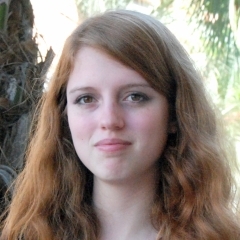
Date:
Location:
Speaker:
Title: Improving Ab-Initio Simulations of Ordering Phenomena in Transition Metal Alloys
Advisor: Michael Gordon
Abstract
Density Functional Theory (DFT), first developed by Walter Kohn, Lu Sham, and Pierre Hohenberg in the 1960s, has become the most popular ab-initio technique for predicting electronic, structural, and thermodynamic properties of alloys and oxides. These predictions, however, are directly applicable only for materials at low temperatures and in simple configurations, as DFT is inherently a zero-Kelvin technique, and is tractable only for unit cells containing a few hundred atoms at most. Instead, a variety of statistical mechanical approaches have been developed to link the zero Kelvin, nanoscale picture painted by DFT with the temperatures and length scales relevant to real-world applications. In this presentation, I'll demonstrate how I've leveraged high-throughput DFT calculations and statistical mechanical techniques to develop new insights into transition metal alloys. After briefly reviewing both DFT and the cluster expansion formalism, I will describe two projects where success depended on constructing rigorous connection between zero Kelvin simulations and finite temperature predictions.
In the Co-Pt alloy system, commonly available functionals for DFT predict an alternative set of stable ground states incompatible with experimental observations. However, the question as to “who is right”, experimentalists or theorists, cannot be solved by direct comparison. Instead, by employing a series of statistical mechanical approaches, I have unambiguously demonstrated that common implementations of DFT fail to correctly describe the Co-Pt alloy system. In the pseudo-binary Heusler system (Mn,Fe)Ru2Sn, a microstate-level picture was needed to probe the low-temperature magnetic behavior of a chemically disordered (annealed-and-quenched) alloy. Using stochastic simulations, we were able to understand the anomalous exchange hardening observed at at.%Fe >= 0.40 compositions and develop a descriptive model of the antiferromagnetic nano-domains responsible for the phenomena. In both cases, I will illustrate the process by which cluster expansion Hamiltonians are constructed, and describe briefly the software our group has developed to automate the process.
Everyone welcome!



